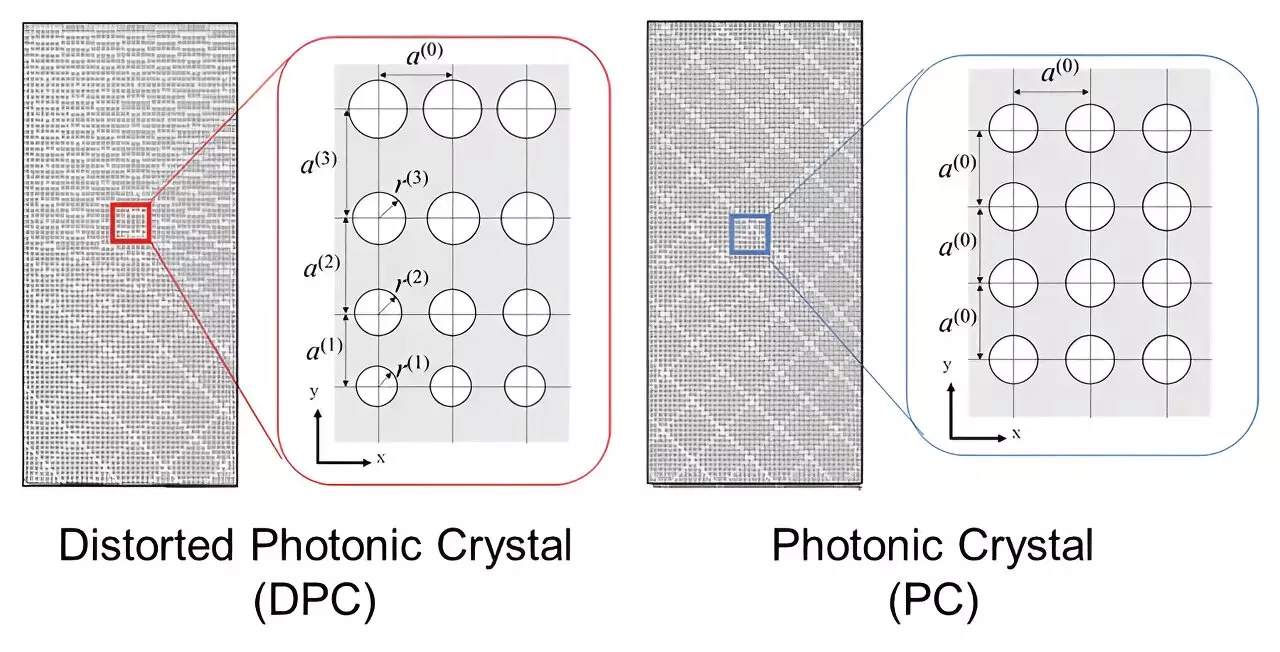In a groundbreaking study published in the journal Physical Review A, a group of researchers have achieved a significant breakthrough in the manipulation of light. By simulating the effects of gravity on electromagnetic waves, the team has demonstrated the possibility of bending light within certain materials. This discovery holds tremendous implications for the fields of optics, materials science, and even the development of 6G communications.
Albert Einstein’s theory of relativity has long established that gravitational fields can deflect electromagnetic waves, including light and terahertz electromagnetic waves. Building upon this established knowledge, scientists have recently theorized that it may be possible to replicate gravitational effects, known as pseudogravity, by deforming crystals in the lower frequency region.
Photonic crystals, which possess unique properties to control the behavior of light, served as the foundation for this groundbreaking experiment. These crystals act as “traffic controllers” for light, allowing scientists to manipulate and slow down its movement. By periodically arranging different materials with varying light interaction abilities, a regular and repeating pattern is created within the crystals.
Professor Kyoko Kitamura and her colleagues from Tohoku University’s Graduate School of Engineering aimed to explore whether lattice distortion in photonic crystals could produce pseudogravity effects. By introducing a gradual deformation of the regular spacing of elements, the grid-like pattern of these crystals was disrupted. This modification manipulated the photonic band structure of the crystals, resulting in a curved trajectory of light within the medium.
In their experiments, the researchers utilized a silicon distorted photonic crystal with a primal lattice constant of 200 micrometers and terahertz waves. These experiments successfully demonstrated the deflection of terahertz waves, showcasing the potential of this novel approach in manipulating light within materials.
This breakthrough holds particular significance for the future of communications technology, such as the development of 6G. The ability to steer and manipulate light within the terahertz range opens up new possibilities for in-plane beam steering. This means that photonic crystals could potentially be utilized to control the direction of light waves, enhancing the efficiency and speed of communication technologies.
In addition to its implications for optics and communications, the findings of this study also have academic significance. By demonstrating the harnessing of gravitational effects in photonic crystals, new pathways within the field of graviton physics are being explored. Associate Professor Masayuki Fujita from Osaka University highlights the potential for further research and discoveries in this emerging area of study.
The manipulation of light through the simulation of gravity effects marks a significant milestone in the world of optics and materials science. This groundbreaking achievement opens up new possibilities for the manipulation and control of light within materials, with profound implications for the advancement of 6G communications. Additionally, the exploration of pseudogravity effects in photonic crystals paves the way for further advancements in the field of graviton physics. As scientists continue to push the boundaries of what is possible, the future of light manipulation holds great promise for technological and scientific breakthroughs yet to come.


Leave a Reply